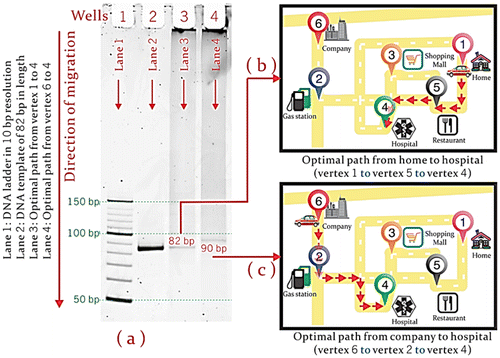The next step in DNA computing: GPS mapping?

Conventional silicon-based computing, which has advanced by leaps and bounds in recent decades, is pushing against its practical limits. DNA computing could help take the digital era to the next level. Scientists are now reporting progress toward that goal with the development of a novel DNA-based GPS. They describe their advance in ACS' The Journal of Physical Chemistry B.
Jian-Jun Shu and colleagues note that Moore's law, which marked its 50th anniversary in April, posited that the number of transistors on a computer chip would double every year. This doubling has enabled smartphone and tablet technology that has revolutionized computing, but continuing the pattern will come with high costs. In search of a more affordable way forward, scientists are exploring the use of DNA for its programmability, fast processing speeds and tiny size. So far, they have been able to store and process information with the genetic material and perform basic computing tasks. Shu's team set out to take the next step.
The researchers built a programmable DNA-based processor that performs two computing tasks at the same time. On a map of six locations and multiple possible paths, it calculated the shortest routes between two different starting points and two destinations. The researchers say that in addition to cost- and time-savings over other DNA-based computers, their system could help scientists understand how the brain's "internal GPS" works.
More information: "Programmable DNA-Mediated Multitasking Processor" J. Phys. Chem. B, 2015, 119 (17), pp 5639–5644. DOI: 10.1021/acs.jpcb.5b02165
Abstract
Because of DNA appealing features as perfect material, including minuscule size, defined structural repeat and rigidity, programmable DNA-mediated processing is a promising computing paradigm, which employs DNAs as information storing and processing substrates to tackle the computational problems. The massive parallelism of DNA hybridization exhibits transcendent potential to improve multitasking capabilities and yield a tremendous speed-up over the conventional electronic processors with stepwise signal cascade. As an example of multitasking capability, we present an in vitro programmable DNA-mediated optimal route planning processor as a functional unit embedded in contemporary navigation systems. The novel programmable DNA-mediated processor has several advantages over the existing silicon-mediated methods, such as conducting massive data storage and simultaneous processing via much fewer materials than conventional silicon devices.
Journal information: Journal of Physical Chemistry B
Provided by American Chemical Society


















